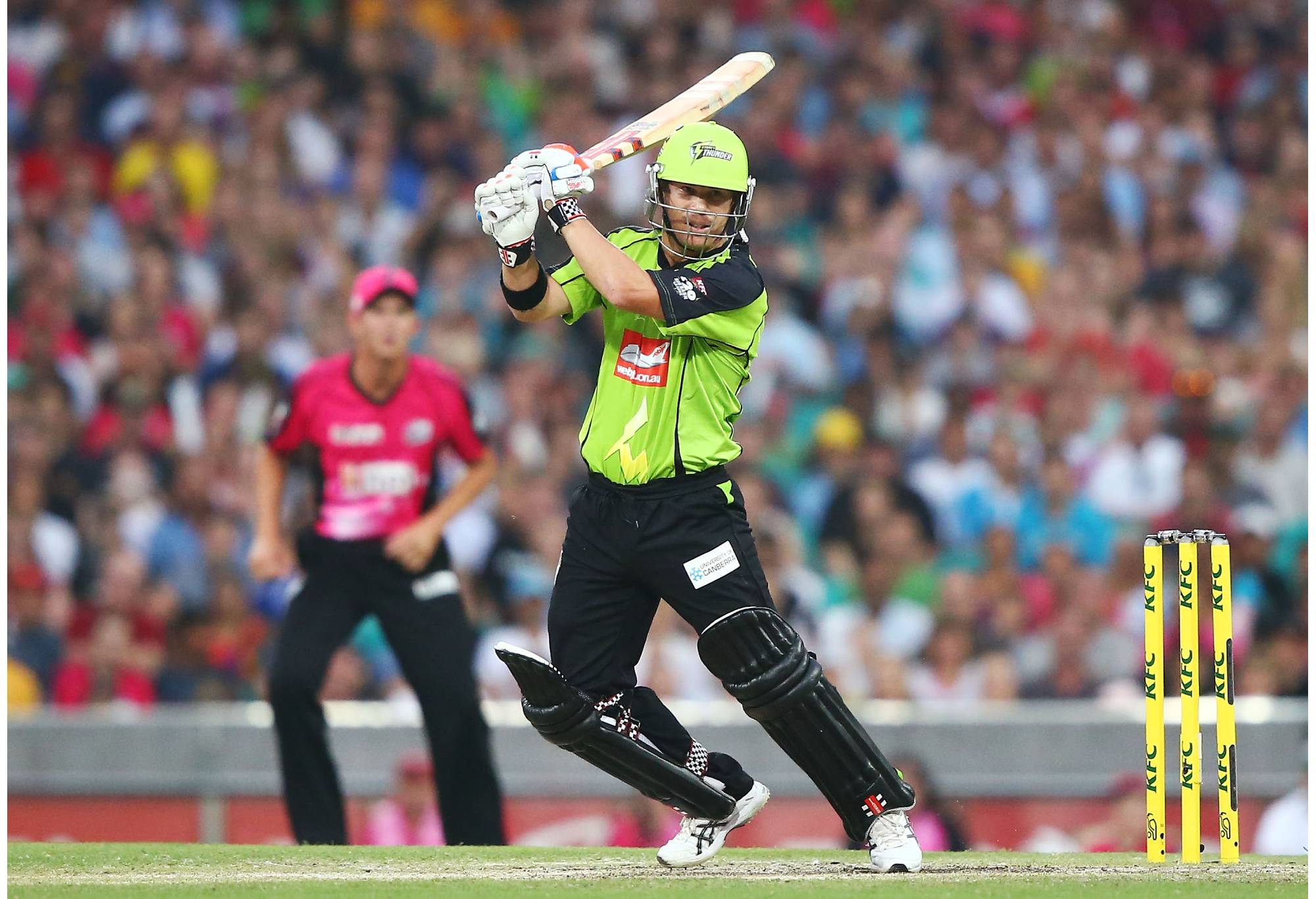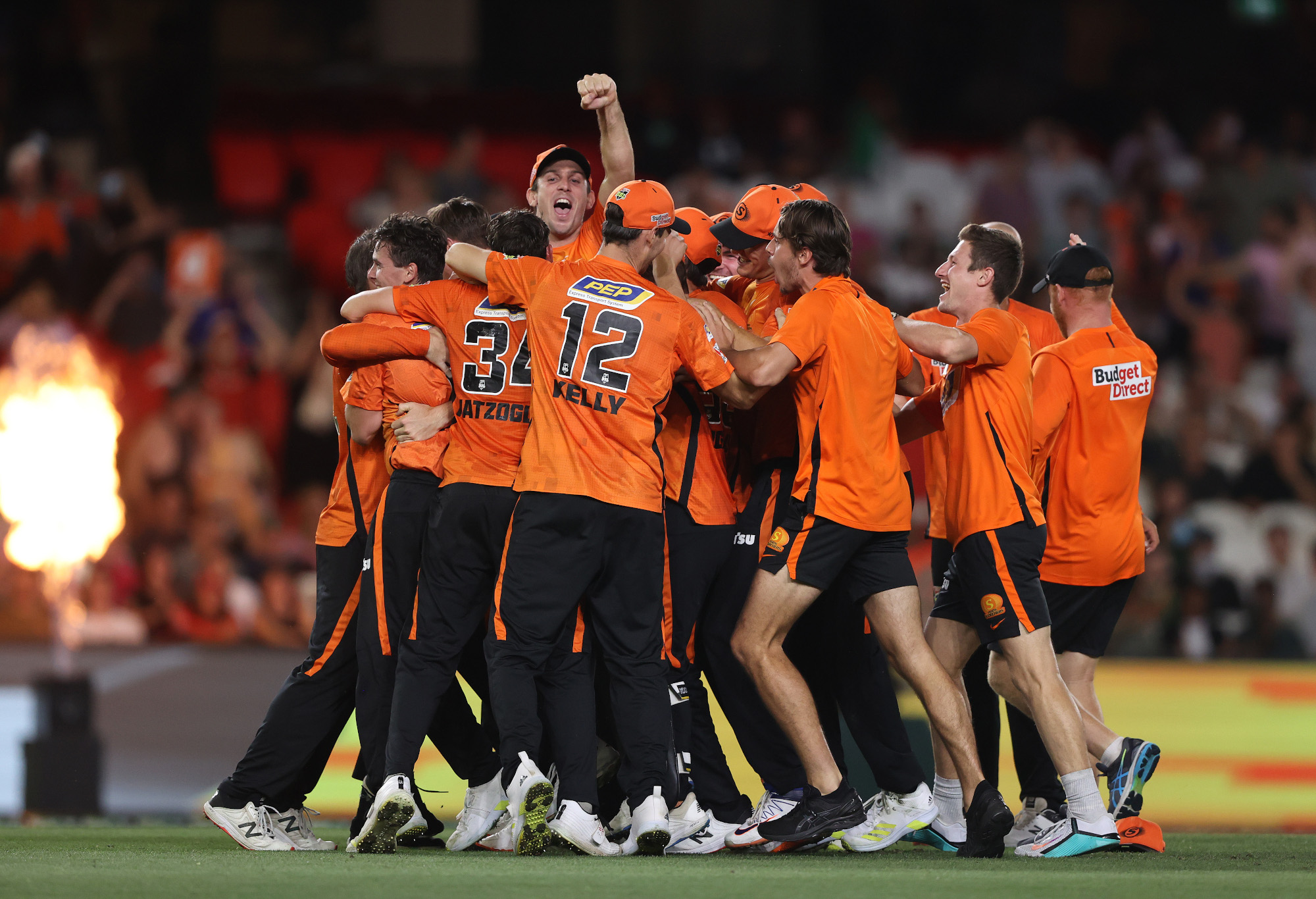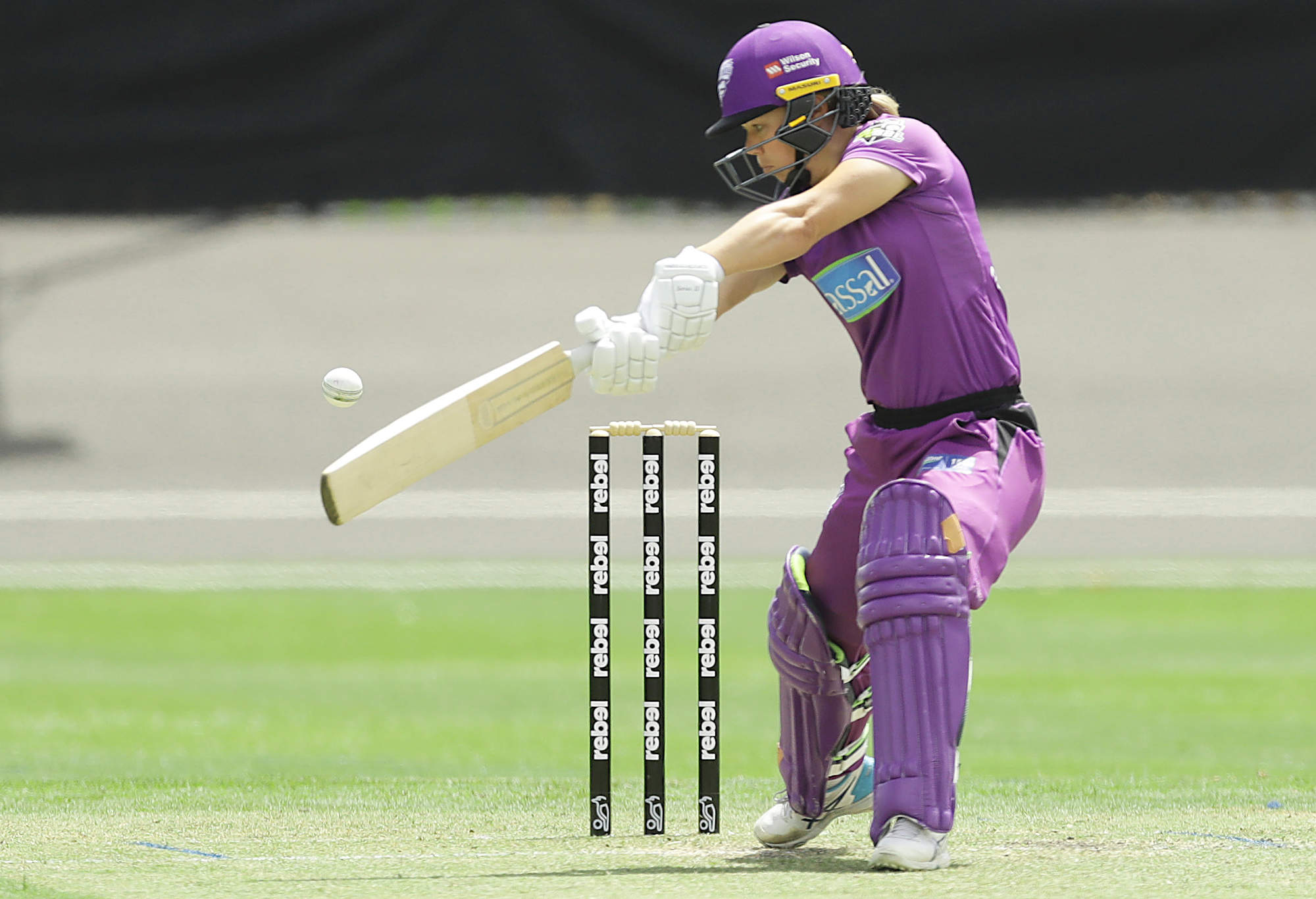
Inevitably this is going to have a negative effect on the value of TV rights deals.
For sports fans who are able to pay for subscription services, whether that’s Foxtel, Kayo or the specific streams like NBA TV or NFL Game Pass, you don’t need to be watching a match when it starts to see the whole thing.
In a time-poor world, it’s much easier to turn off your phone notifications, tune in late – whether that’s 10 minutes or hours afterwards – whenever it suits, skip through the stoppages, ads, half-time breaks and whatever else makes the real-time experience a drag.

David Warner. (Photo by Matt King/Getty Images)
Or if you haven’t forked out for a subscription, do you really need to when you can see every try, wicket, goal or major moment within moments on social media, often from the official account of the sport or its broadcaster?
Of course there’s nothing like the thrill of watching a match live in your lounge room, friend’s house or down your local.
And the second-screen experience of social media interaction can be a fun addition, if you can tolerate inane posts in your feed like “lesssgo”, “ooomph” or “beast mode”.
Appointment viewing no more
Sport was seen as one of the last bastions of “appointment viewing” for television executives.
Very few people watch other programming the old-fashioned way of one episode a week, same bat time, same bat station.
The streaming era means TV content is binged when the viewer wants with entire seasons of series being released and gobbled up by fans in binge mode before moving onto the next one.
For sporting executives, the challenge now is to keep eyeballs engaged because if advertisers cotton on to the fact that viewers are able to skip through their drivel, their “spend” will quickly end.
Which is partly why you now see ads crammed onto a split screen during hold-ups in play, like an injury delay, a conversion attempt, free throw or any one of cricket’s endless excuses for a player or umpire to bring a halt to proceedings.

Tom Hawkins marks in front of Tom Clurey. (Photo by James Elsby/AFL Photos via Getty Images)
Free-to-air ratings for pretty much every sport in Australia have been in decline over the past decade as the streaming era has taken hold.
The fortunes that were once outlaid by the three free-to-air networks and Foxtel are dwindling, and it’s becoming a survival of the fittest with only the most popular sports getting the telephone number deals.
Australia’s two mainstream winter leagues – the AFL and the NRL – extended their broadcast deals after eventually playing through, mostly, the pandemic.
The AFL has conceded streaming services such as Amazon, Paramount and YouTube could be options when its next deal kicks in for 2025 and beyond and executives, including CEO Gillon McLachlan, flew to the US a few months ago to start talks.
It’s feasible that one of those providers could broadcast a game or two each round in what would be a significant moment for the sport but it looks like Seven and Fox are close to sealing a deal worth for another five years until the end of the decade with the AFL hoping to reap a combined $3 billion from their broadcast partners.
The NRL is in the early stages of its broadcast cycle with its deal split between Nine, Fox Sports and Sky NZ running until the end of 2027.

(Photo by Robert Cianflone/Getty Images)
Cricket at the crossroads
Cricket will soon face its moment of truth on two fronts.
Channel Seven will broadcast the upcoming home summer of cricket but is trying to extricate itself from the rest of its $450 million six-year deal which is due to expire in 2024 over complaints about the standard of the Big Bash League.
Depending on what happens with the Seven deal, Cricket Australia is urgently trying to bolster the BBL by throwing vast sums at David Warner during the Test break and foreign stars to boost ratings heading into negotiations with networks for the next rights deal.
CA shored up its finances last month by announcing Disney Star had agreed to a seven-year deal, starting next year, to televise all international matches in Australia, as well as the BBL and WBBL into India, the world’s largest cricket market and one of the planet’s most lucrative sporting realms.
That’s a nice little $250m bonus that other Australian sports can never hope to add onto their domestic deals.
It was no surprise therefore earlier this week to see an increase in Australia vs India matches when CA released its long-term schedule until 2027.
Content is king and when you can sell to India, you can make a king’s ransom.

Melbourne’s Matthew Dellavedova drives to the basket against the Sydney Kings at Qudos Bank Arena. (Photo by Matt King/Getty Images)
Fears for lower tiers
Australia’s big three sports will be fine but the trickle-down effects of the crowded sports rights market has already cost rugby and soccer massive amounts at the negotiating table.
Basketball has rapidly rebounded, so to speak, from the dark years of a decade ago, but the historically strong NBL is still not in the same ballpark as the major sports when it comes to dedicated viewers.
The newer players on the TV rights landscape like Stan Sport, Paramount+ and Optus Sport are carving out a niche by focusing on the second-tier sports.
Niche broadcasting is the way of the future for sports networks – if you’re a fan of tiddlywinks and you want to pay for the privilege, you will go to the tiddlywinks network/app/streaming service. Not the greatest example but you get the picture.
A rising force is women’s sport. After decades of being sidelined to suburban venues away from the network camera’s gaze, the explosion in popularity, particularly around the three main sports, has been a breath of fresh air.
The AFLW, NRLW and WBBL have viewing figures the envy of several of the male sporting leagues and that is likely to be reflected in the next TV rights deals.

(Photo by Mark Metcalfe/Getty Images)
And that should definitely lead to greater pay for athletes who are semi-professional and forced to cram their sporting careers around “their other job”.
Another uncertainty for those who are free-to-air viewers only, the Federal Labor Government is reviewing the anti-siphoning laws which protect marquee events like the Olympics, Australian Open tennis, Formula 1 Grand Prix, Melbourne Cup and Test cricket from only being shown on pay TV.
Communications Minister Michelle Rowland has indicated the laws, which are up for review in April, are outdated because they were created before the advent of over-the-top streaming services.
She is keen to protect the existing sports that are on the free-to-air list from being stuck behind paywalls but it’s a tricky issue because sports may be able to earn more from the cashed-up new media than the traditional outlets.
Whichever way you look at it, the broadcast picture is changing.


Leave a Reply